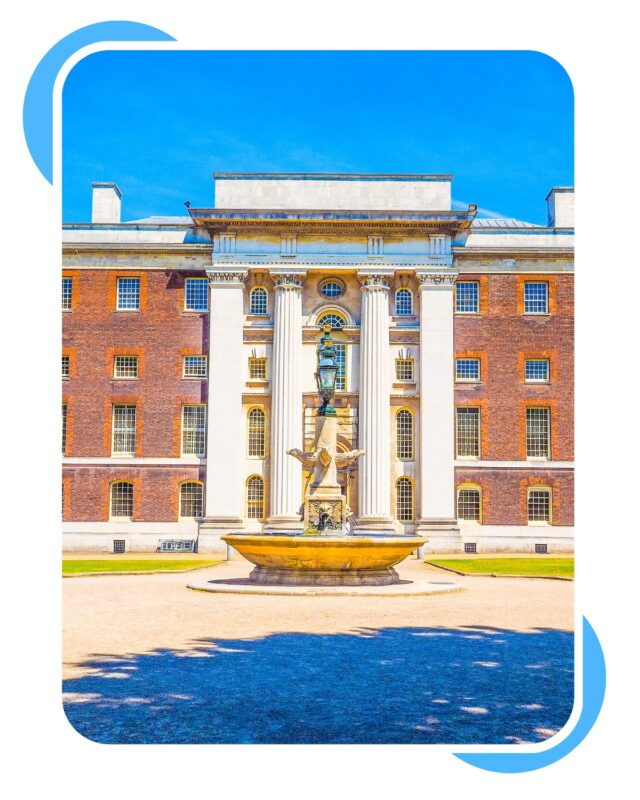
Of course! Fine arts courses typically focus on various forms of visual arts, such as painting, drawing, sculpture, printmaking, and digital media. These courses are designed to help students develop their skills and techniques in their chosen art form and explore different artistic styles and methods.
In addition to the technical aspects of creating art, fine arts courses often also cover art history and theory. This can include studying the works of famous artists and art movements and learning about the social and cultural contexts that shaped different artistic trends and styles.
Some fine arts courses may also include practical elements, such as gallery visits, studio sessions, and critiques, where students can receive feedback on their work and learn from their peers. Other courses may focus more on the theoretical aspects of art, such as the psychology of creativity or the relationship between art and politics.
Overall, fine arts courses offer a rich and diverse learning experience for anyone interested in pursuing a career in the arts or simply exploring their creativity and artistic potential.

Fine Arts Course Highlights
There are many highlights of fine arts courses that can make them a rewarding experience for students. Here are some of the most common highlights:
Candidates must have completed Standard XII from a recognized board in any stream to be eligible for a Bachelor of Fine Arts program. While there is usually no other set criteria, some universities or colleges may require candidates to have secured a minimum percentage (typically 50-60%) in Class 12th to be considered for admission. In some cases, preference may be given to candidates who have studied Arts or Humanities in Class 12th and have some basic knowledge of the Fine Arts subject they wish to pursue. It’s important to note that eligibility criteria vary among different institutions and programs, so it’s always best to check with the specific institution for their exact requirements. Overall, a Bachelor of Fine Arts program offers an excellent opportunity for those interested in exploring their creativity and developing their skills in the visual arts.
The selection criteria for Bachelor of Fine Arts program admission can vary among colleges. Some institutes offer access based on the merit acquired in the qualifying exam, which is typically the 10+2 level. However, others conduct an entrance exam to shortlist deserving candidates. Popular entrance exams for BFA admissions include the Delhi University Entrance Test (DUET), Lovely Professional University National Eligibility and Scholarship Test (LPUNEST), NIMS Entrance Exam, and BHU UET or BHU Entrance Examination.
Students interested in pursuing a Bachelor of Fine Arts should take the required entrance exam to be eligible for admission. Each BFA college has its entrance exam, followed by counselling to determine final access. Some commonly held entrance exams for BFA colleges are ITM NEST, BHU UET, UPSEE, and AUCET.
It’s important to note that these entrance exams’ application periods and exam dates can vary. For example, the TISS BAT exam is typically held in September, while the IPU CET exam is held in June. The JNUEE exam application period is between May 19 to June 18, 2022, with the exam date still waiting to be notified. Similarly, the CUET exam is held between July 15, 2022, to August 10, 2022, with the application period from April 06 to June 26, 2022.
Overall, students interested in pursuing a Bachelor of Fine Arts degree should research their desired college’s admission requirements and entrance exams to ensure they meet the eligibility criteria and can apply on time.
Several entrance exams are conducted for admission to acceptable arts courses in India. Some of the popular exams include:
| Exam Name | Application Period | Exam Date |
|---|---|---|
| CUET | March 2023 | May 21 – 28, 2023 |
| IPU CET | March 2023 | 1st week of May 2023 |
| JNUEE | May 2023 | July 2023 |
Here are some of the most common specialisations:
| BFA Specialisations | |
| Painting | Applied Arts |
| Plastic Arts | Pottery & Ceramics |
| Textile Design | Music |
| Drama & Theatre | Digital Arts |
| Calligraphy | Cartooning |
| Dance | Graphic Designing |
| Illustration | Photography |
| Printmaking | Sculpture |
| Semester | Core/Elective | Subject Title |
|---|---|---|
| 1 | History of Art – I | Subject title |
| 2 | Introduction to Communication Skills | Introduction to Communication Skills |
| 3 | Painting – III | Painting – III |
| 4 | Photography – II | Photography – II |
| 5 | Aesthetics – III | Aesthetics – III |
| 6 | Computer Graphics – III | Computer Graphics – III |
| 7 | Mural – I | Mural – I |
| 8 | Composition – III | Composition – III |
The course curriculum for fine arts specializations can vary depending on the specific discipline and the level of study. However, here is a general overview of what you might expect in some common fine arts specializations:
1. Drawing and Painting:
2. Sculpture:
3. Printmaking:
4. Photography:
4. Graphic Design:
5. Digital Arts:

Top NIRF-ranked Fine Arts Colleges
The National Institutional Ranking Framework (NIRF) is a ranking system in India that assesses and ranks higher education institutions nationwide. In terms of fine arts colleges, some of the top-ranked institutions, according to NIRF, include:
Top 10 Private Fine Arts Colleges
Private fine arts colleges offer a comprehensive visual and performing arts education, providing students with the skills and knowledge needed to pursue careers in various creative fields. Here are the top 10 private fine arts colleges

Fine Arts Career Scope:
A career in fine arts can offer a wide range of opportunities for those with a passion for creativity and expression.
Fine art is a diverse field that offers various career opportunities for individuals passionate about creative expression. There are numerous job profiles in this field, from painting and sculpture to graphic design and photography. Some popular job profiles in fine arts include graphic designer, art director, art teacher, museum curator, and freelance artist.
Regarding salaries in the fine arts industry vary widely depending on the job profile and experience level. For example, an entry-level graphic designer can earn around INR 250,000 per year, while a senior art director can earn upwards of INR 1,500,000 per year. On the other hand, freelance artists may earn a variable income depending on their projects.
In terms of top recruiters in the fine arts industry, many options are available. Some leading companies and organizations that hire professionals include advertising agencies, design firms, museums, art galleries, educational institutions, and government agencies. Some notable recruiters in India have the National Gallery of Modern Art, the Delhi Art Gallery, and the Indian School of Design and Innovation.

FAQs (Frequently Asked Questions) for Fine Arts
Here are some frequently asked questions about Fine Arts:
Fine Arts is a field of study that involves creating and producing visual art forms such as painting, sculpture, drawing, and more. It encompasses a wide range of art forms and techniques that are used to express emotions, ideas, and concepts.
Several courses are offered in Fine Arts, including Bachelor of Fine Arts (BFA), Master of Fine Arts (MFA), Diploma in Fine Arts, and Certificate courses. These courses cover various aspects of Fine Arts, such as painting, drawing, sculpture, and other forms of visual arts.
Candidates must have completed Standard XII from a recognized board in any stream to be eligible for a Bachelor of Fine Arts program. am. While there is usually no other set criteria, some universities or colleges may require candidates to have secured a minimum percentage (typically 50-60%) in Class 12th to be considered for admission. In some cases, preference may be given to candidates who have studied Arts or Humanities in Class 12th and have some basic knowledge of the Fine Arts subject they wish to pursue.
The duration of Fine Arts courses can vary depending on the program and the level of study. A Bachelor of Fine Arts program usually takes 3-4 years to complete, while a Master of Fine Arts program can take 2-3 years. Diploma and certificate courses can range from a few months to a year.
Job opportunities in Fine Arts can include roles such as artists, art teachers, art directors, curators, illustrators, graphic designers, and more. Fine arts graduates can work in art studios, museums, galleries, advertising agencies, and other creative industries.
Fine Arts can be a great career choice for individuals passionate about creating and expressing themselves through art. While the industry can be competitive, with dedication and hard work, one can succeed in this field. Additionally, a degree in Fine Arts can provide individuals with valuable skills such as creativity, communication, and problem-solving, which can be transferable to other careers.
